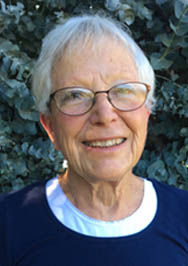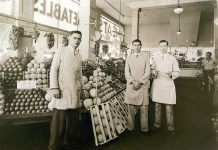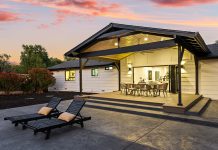Right smack in the middle of the campus of Chico State University a Victorian mansion sets among decades old camellias in full bloom.
It is March and Chico Creek flows rapidly nearby, pristine, ice cold, crystal clear water having just concluded its descent from the Sierra Nevada mountains a few miles east.
It’s a lovely setting hopefully providing the busy students of Chico State some inner peace as well as an awareness that if not for the insight and knowledge of John Bidwell, they would not be carrying their books and iPads across the many pedestrian bridges providing passage over the creek, saving them the necessity of portaging to their classes.
Furthermore, perhaps there would have been no city of Chico; no acres of stone fruit throughout the northern third of the Central Valley; and somebody else would have the title of “Father of California agriculture.”
Born on Aug. 5, 1819, it is a mere but interesting coincidence that as his 200th birthday approaches, my daughter Sarah and I finally drove to Chico for the first time in our lives!
Lucas Kiff, my grandson, is a Junior at Chico State, studying ag-economics and it was time to get an introduction and tour of “his” Chico.
When we learned that Lucas had been walking by the Bidwell Mansion without darkening its doorstep for nearly three years, we three determined to knock with the hope that someone was home.
Somebody was. And for a nominal fee, we had a marvelous tour of all three floors of the lovely home of John and Annie Bidwell.
As part of the docent’s presentation, we learned of Bidwell’s appreciation of the land he was granted by the Mexican government in 1845 on the Sacramento River and his subsequent purchase of Rancho Arroyo Chico on Chico Creek. It was upon the hundreds of acres comprising his ranch and farm that orchards and ultimately businesses and settlers began to spiral out from the center, the home of the Bidwells.
As Lucas drove us to areas to walk and hike into the gentle hills surrounding Chico, we noticed all the flowering trees in long rows. They were mostly almonds, walnuts and apricots, crops Bidwell had determined through successes and failures, that thrived in the soil and climate of Chico and nearby Orland.
Driving home, Sarah and I mused, if these huge orchards can be tended so beautifully, no weeds growing within the drip lines of trees and closely cropped green growth forming pathways between the tree rows, can’t we provide the same care to our few trees?
In spite of being aware of modern mechanized pruning and some obvious use of Roundup by Big Agriculture, we conclude that though it takes some serious handwork, small farms can be as geometrically pleasing as commercial ones.
There is an order to it all that makes it easier. First, weed under the canopy of the trees. Next, prune them. Pick up the prunings and either put them into your plant recycling container or, if you have acreage, build a burn pile and set fire to it on an official burn day for which you have a burn permit.
If this is new to you, contact the Northern Sonoma County Air Pollution Control District (NSCAPCD) at 707-433-5911.
They are the issuing authority and permits are valid for one year and must be renewed annually at a cost of $30.
Every year I address the necessity of pruning a fruit tree. In a nut shell (recalling the almond orchards) pruning clears dead wood, crossing branches, tall branches, busy little twigs preventing sun and air, and too much fruit forming, which leads to small size fruit. (Remember, after the fruit forms it has to be thinned in spring.)
Of utmost importance is the pruning of stone fruit trees, as the fruit of these forms on year-old wood only. If this wood is not diminished annually, it will grow farther and farther out to where ladders barely reach and humans fall along with their pruning shears. Not good.
Therefore, in the spirit of the Bidwells, care for your trees. If you’re like John Bidwell, six-feet, one-inch tall (or more) you can reach trees without a ladder. If you’re small, like Annie, you are four-feet, eight-inches and can crouch under the tree very nicely and weed.
Have at it!
Renee Kiff weeds and writes at her family farm in Alexander Valley.









